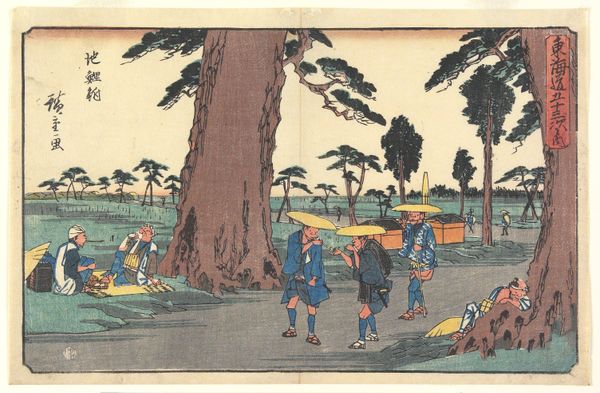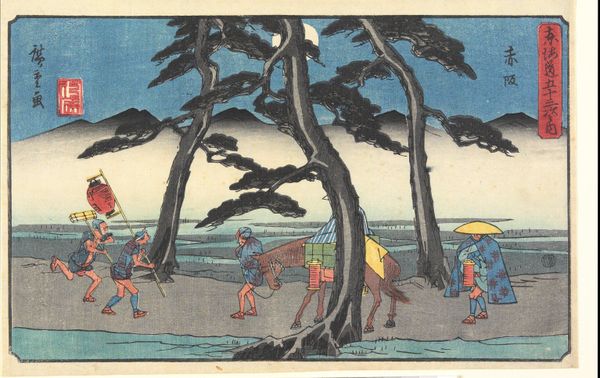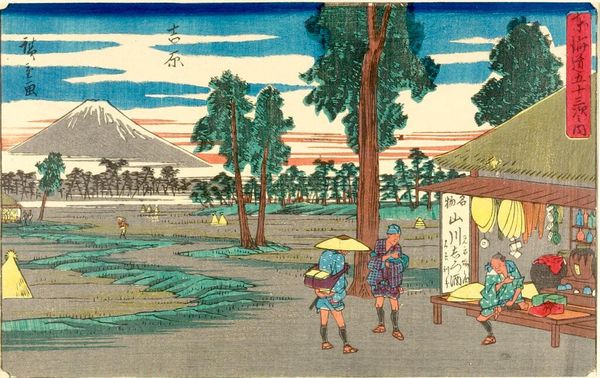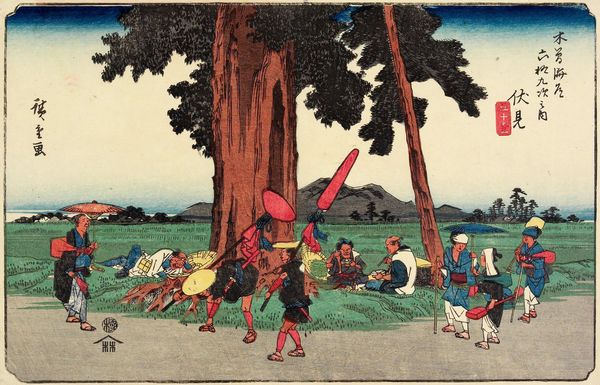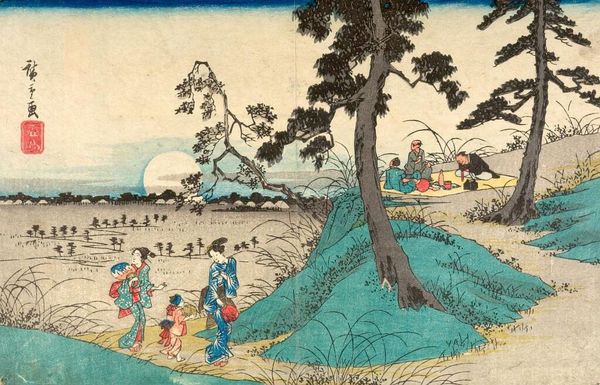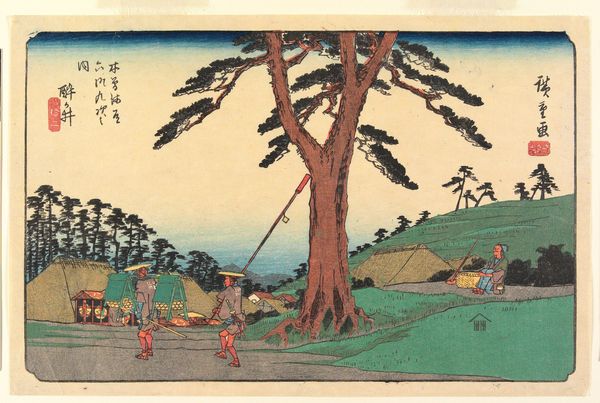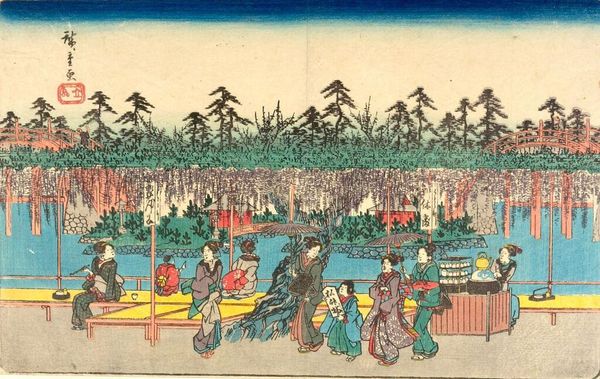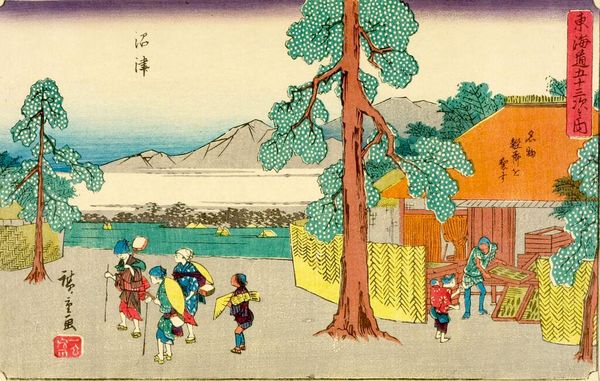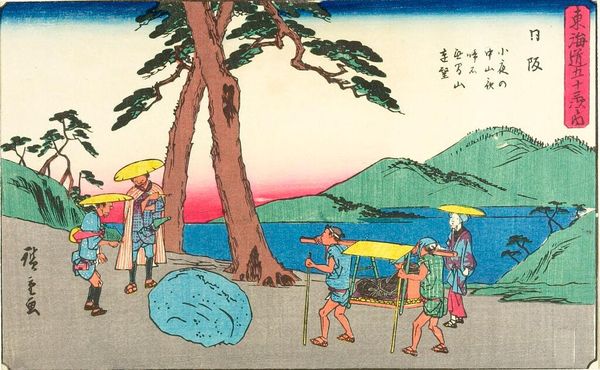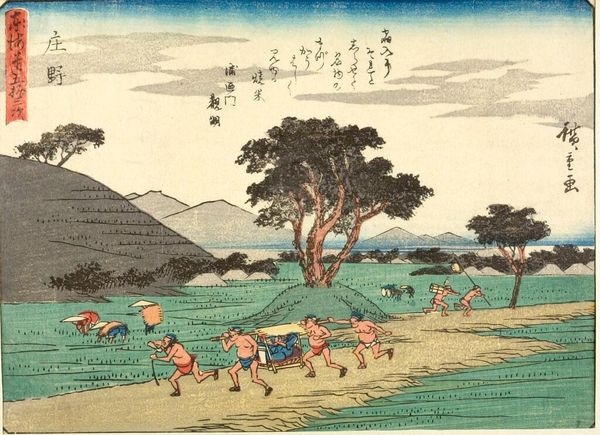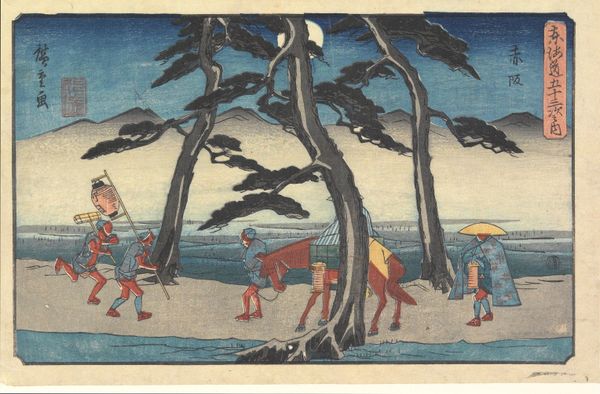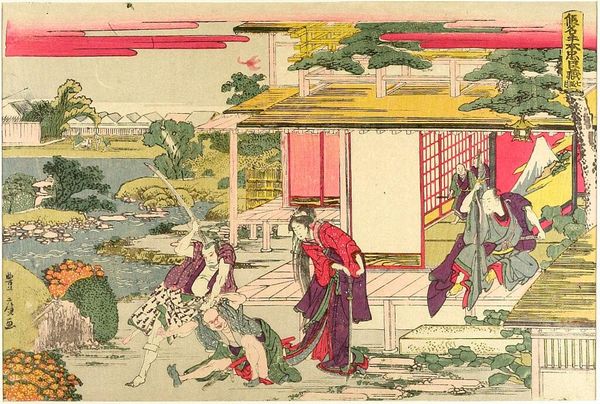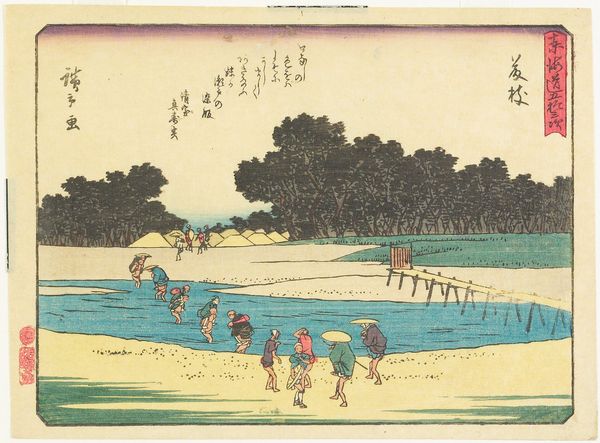
SMALL SERIES OF THE 53 STATIONS OF THE TOKAIDO, "CHIRIU", STATION NO. 40 c. 19th century
0:00
0:00
Copyright: CC0 1.0
Editor: So, this is Utagawa Hiroshige's "Chiryu" from the '53 Stations of the Tokaido' series. The figures seem at ease in the landscape, and the colors evoke a sense of tranquility. What strikes you most about this work? Curator: The figures represent ordinary travelers, highlighting the democratic nature of travel in Japan at the time. This challenges traditional artistic representations of elites. How does the artist's choice to depict everyday life, rather than idealized landscapes, speak to broader social changes? Editor: That's interesting! I hadn't thought about how the common traveler became a subject worthy of art. Curator: The focus on the journey of ordinary people raises important questions about who gets represented in art and how this representation reflects and influences social and political values. Editor: I see now. By representing ordinary people, Hiroshige validates their existence and experiences. Curator: Exactly! And considering that the Tokaido road was a site of immense social exchange, the artwork becomes a record of and commentary on the diversity of human life. Editor: Thanks, that gives me a new way of seeing Hiroshige’s prints.
Comments
No comments
Be the first to comment and join the conversation on the ultimate creative platform.
